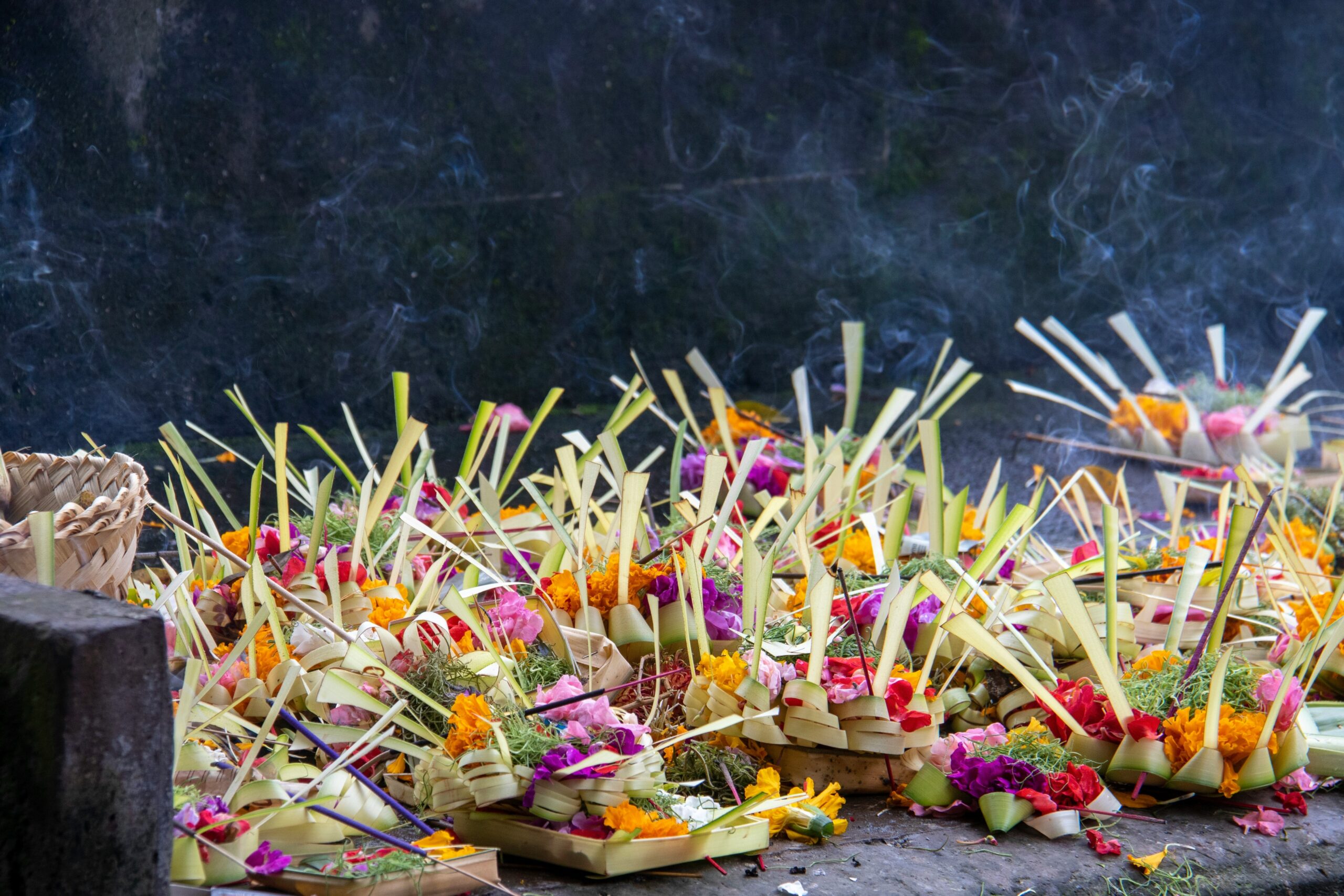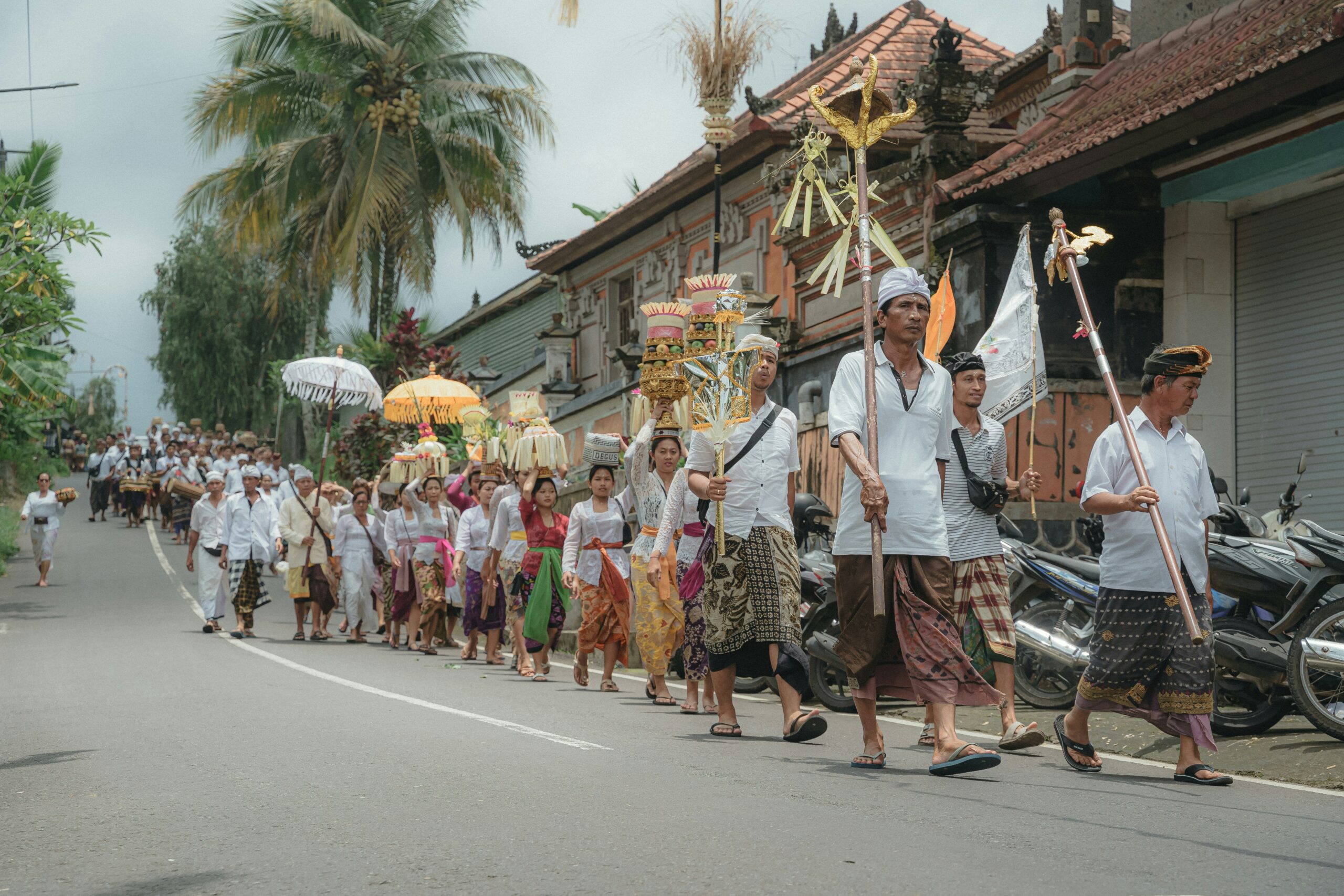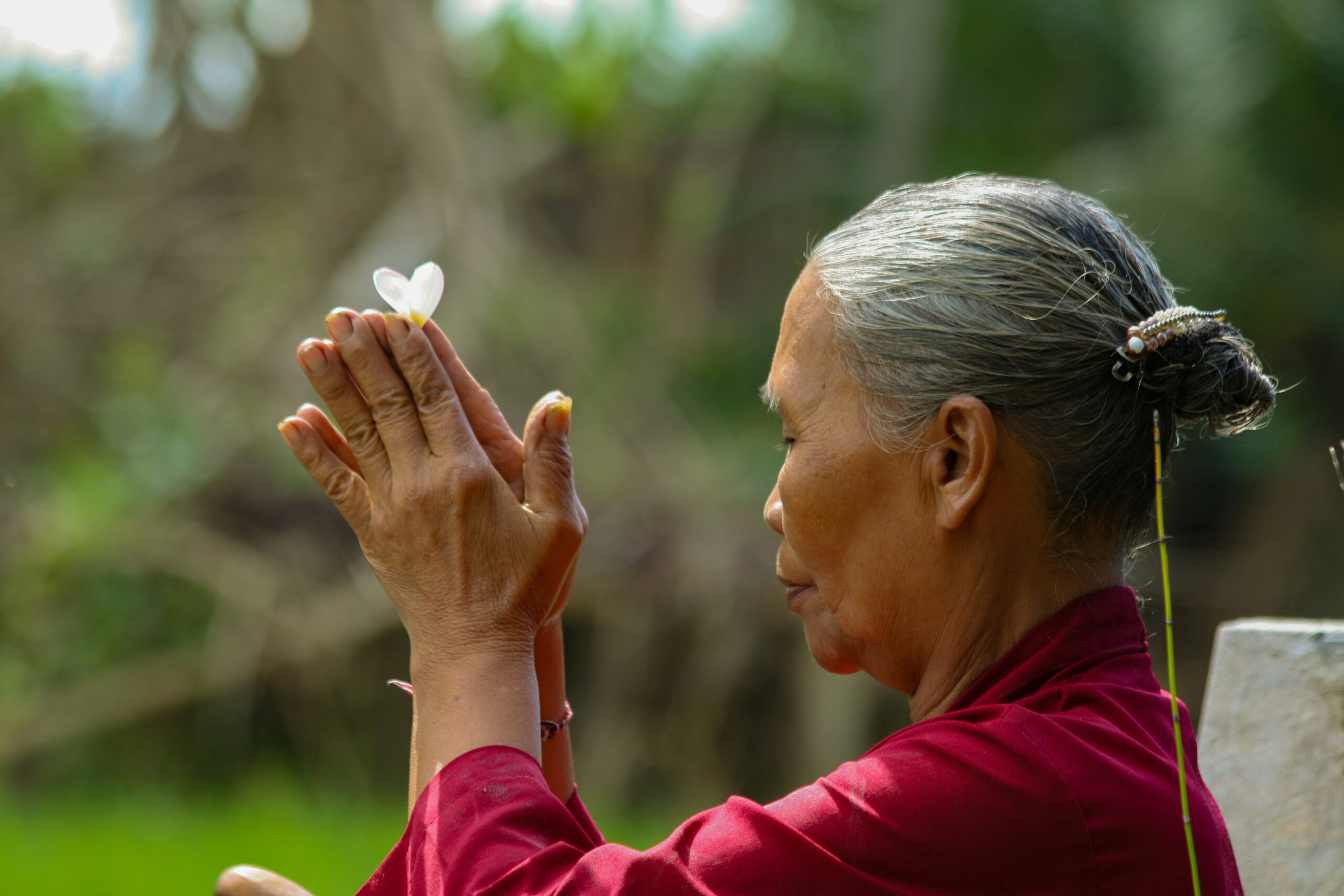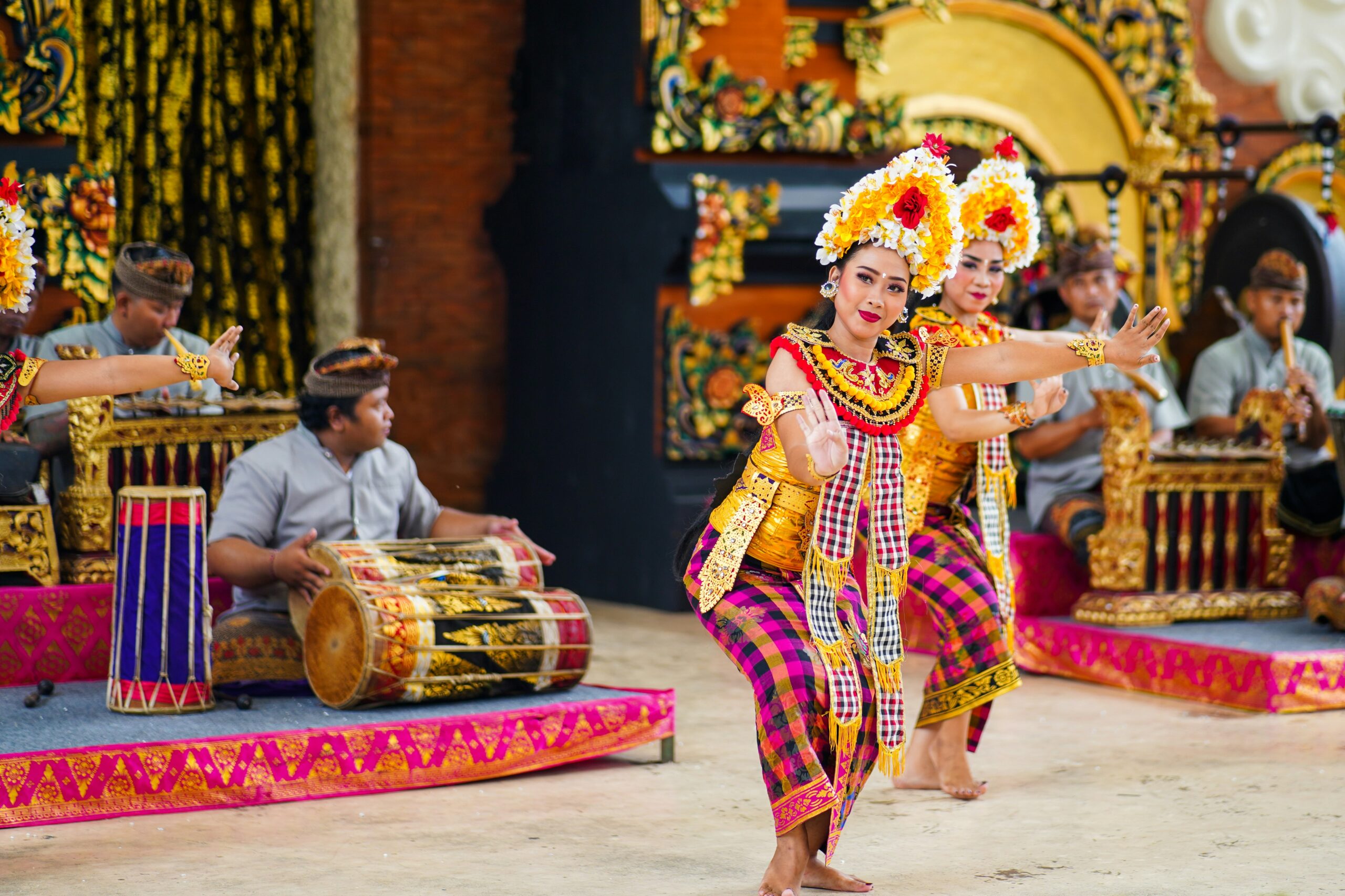Bali offerings (Canang sari)
Upon your visit to Bali, you’re sure to spot Canang sari everywhere you wander and are little baskets filled with flowers, fruit and other offerings to the gods. You’ll often see them as a small shrine on the ground outside of homes or religious buildings, or elevated atop a shrine with burning incense and often snacks and other details. That being said, there are many other places you may stumble upon these offerings, including inside cars, at the beach, markets and even on mountaintops. Canang sari is often refreshed every day by locals and is a beautiful physical representation of Balinese Hinduism’s devotion to the gods.
The core material of the offering is made from betel leaf, banana leaf, lime, gambier, prestige, tobacco and betel nuts, which represents the three major Hindu gods. Covered with a palm leaf, the Canang sari is ladened with different coloured flowers that point in specific directions, each symbolising a Hindu god. White points east as a symbol of Iswara, red points south as a symbol of Brahma, yellow points west as a symbol of Mahadeva and blue or green points north as a symbol of Vishnu.
As a significant part of daily life in Bali, time and care is taken to prepare the offerings. This long-held tradition is viewed as a sacrifice to the gods—a selfless ritual ingrained in Balinese culture and a religious practice that permeates every aspect of daily life here.





